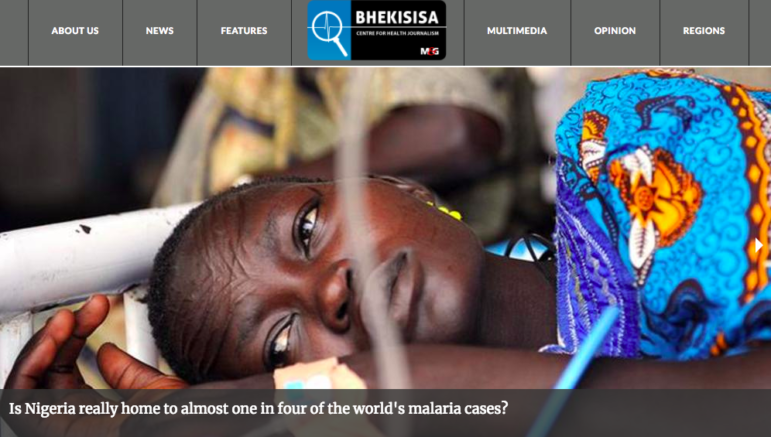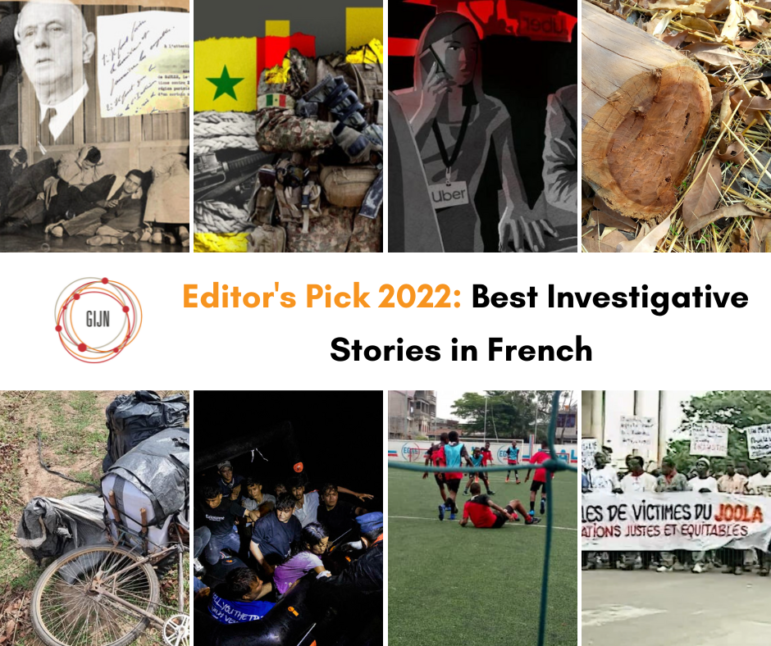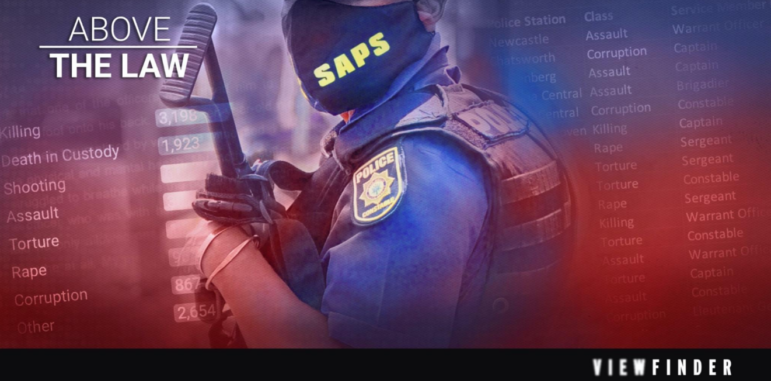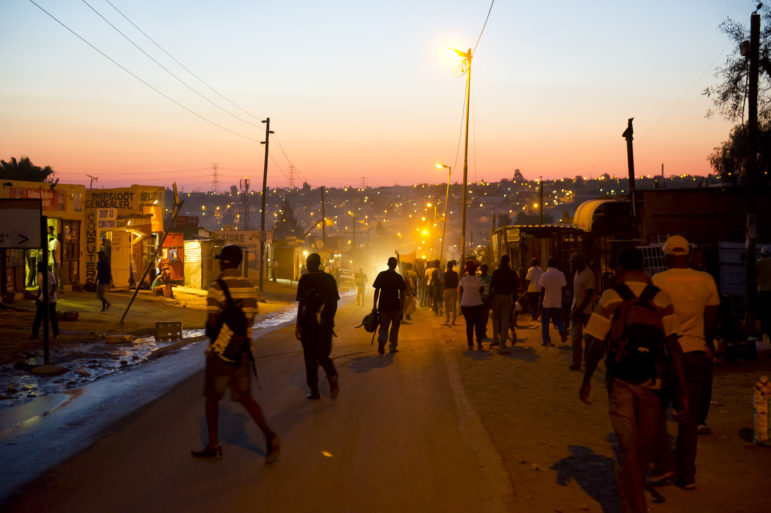

*****WARNING**** please do not publish any images showing the identity these children. (please consult paul and mia) Photos to accompany Mia Malan story on Child Rape in Diepsloot. Photo Delwyn Verasamy
The Balancing Act of Donor-Funded Journalism: A Case Study from South Africa
 Donor-funded journalism is a complex sphere, frequently characterized by balancing acts between the priorities of two vastly different environments. Yet this funding model, which Columbia University’s Anya Schiffrin describes as a “marriage of convenience,” is becoming ever more popular.
Donor-funded journalism is a complex sphere, frequently characterized by balancing acts between the priorities of two vastly different environments. Yet this funding model, which Columbia University’s Anya Schiffrin describes as a “marriage of convenience,” is becoming ever more popular.
The five-year-old organization that I head up – the health desk of one of South Africa’s legacy media outlets, the 33-year old Mail & Guardian – owes its existence and subsistence to philanthropy.
Launched in 2013, the Bhekisisa (an isiZulu word meaning “to scrutinize”) Health Journalism Centre, produces in-depth, analytical coverage of health and social justice issues in Africa. Among our target audience are policy and decision makers such as high level politicians, cabinet ministers, academics, influential activists and NGOs.
In 2012, the Mail & Guardian’s health coverage was extremely sparse. The health stories that did make the publication’s pages appeared in a sponsored pull-out supplement, hidden inside a newspaper filled with political and investigative articles that editors considered more worthy of prominent space. (Editor’s Note: GIJN-member amaBhungane Center for Investigative Journalism was part of the Mail & Guardian before breaking out on its own in 2016.)
With fewer than 3,500 online hits each month, the publication’s online health section was barely read, buried on the site as a sub-subsection of the news subsection. While the newspaper defined conversations and set agendas through its political and investigative reporting, between 2008 and 2012 it was a non-entity when it came to health issues and had virtually no impact on policy in this field during that time.
But this scenario has since changed drastically.
Going Big
With a grant from the German government, Bhekisisa launched, appointing a health editor and two reporters in January 2013. In September 2015, the organization expanded further to six full time staff members and 15 freelance correspondents, after it received additional funding from the Bill and Melinda Gates Foundation. With this support, Bhekisisa launched its own website and broadened its coverage to the rest of the African continent.
Because of donor funds, Bhekisisa has become an entity that just a few years ago was unimaginable: the Mail & Guardian’s largest specialist desk is more than three times the size of the publication’s political desk. It has an editor-in-chief, a news editor, senior multimedia journalist and three full time health writers.; there’s also a senior narrative health writer, an Africa editor on retainer, 15 freelance reporters across the continent who regularly contribute pieces and access to the services of a monitoring and evaluation consultant. In March 2018, Bhekisisa will grow even more, when it receives another Gates grant, and will be in a position to appoint a program associate, engagement officer and part time accountant.
The investment in Bhekisisa, and consequent expansion of its resources, has translated into concrete, measurable impact.
Between 2012 and 2017, the online audience of the Mail & Guardian’s health stories increased 42 fold – from 3, 500 hits per month in February 2012 to 150, 000 in June 2017. Bhekisisa also fills two health pages in the weekly print edition of the newspaper, and often provides the newspaper with additional stories for its news or comment and analysis pages.
Because Bhekisisa has a generous travel budget, it can afford to send its reporters across South Africa, often to rural areas, for features and investigations. These are costly trips, which local publications with shoestring budgets can rarely pay for. And, in a country where experienced health reporters are at a minimum, Bhekisisa’s senior editors can offer its more junior staff the kind of mentoring that has ceased to exist as cash-strapped newsrooms increasingly replace senior staff with cheaper, less experienced employees in exchange for financial survival.
The impact of Bhekisisa’s articles has since transcended that of an expanded audience: reports have helped to influence policy and decision making, set agendas and define conversations.
For example, five months after the center’s launch, the national health minister quoted a Bhekisisa story on the impact of two newly introduced vaccines on disease rates in his budget vote speech in Parliament, because the article contained figures and analysis that no one else had reported on. Soon after, a long-form narrative feature on botched traditional circumcisions led to medical doctors and traditional circumcisers — who historically don’t work together — toward creating a policy to make this rite of passage safer.
In 2015, a United Nations delegation visited projects in a large South African township as a result of an in-depth article on child rape in the area to include information in an international strategy document. In the same year, three government delegations were dispatched to one of the country’s deteriorating regional hospitals following Bhekisisa’s investigation into the mismanagement of the hospital. And in 2017, Parliament invited a Bhekisisa reporter to present the findings of a series of reports on the lack of access to sanitary pads among poorer learners in South Africa, so that a committee could act on them.
The center raises and administers its own funds for essential costs, such as staff salaries, reporting trips and equipment and is a separately registered NGO. But the Mail & Guardian also contributes to Bhekisisa’s costs in the form of free office space, internet and phone lines.
This all sounds very easy, of course; like a magical solution to quality journalism. But getting to this point has been anything but simple.

The sprawling township of Diepsloot in Johannesburg, where Bhekisisa’s story on child rape was based. Photo: Delwyn Verasamy, Mail & Guardian
Newsroom Cost of Donor-Funded Journalism
Bhekisisa’s donor resources, and accompanying impact, has come at a great cost. It has radically changed staff members’ job descriptions from being mere journalists or editors to spending significant time – often up to 30 percent for reporters and 40 percent for editors — as data collectors, fundraisers, event organizers, proposal writers, conference moderators, creators of information management systems and donor-report writers.
The bigger the center has become, and the more donor funds it has received, the higher the burden of such additional responsibilities have become.
In 2013, Bhekisisa had only one donor: the German government. It was required to produce quarterly narrative and financial reports in the Deutsche Gesellschaft für Internationale Zusammenarbeit’s (GIZ) format. The center’s editorial staff had to produce these reports and assemble the metrics data for it, as the organization didn’t receive funding for administrative staff.
When Bhekisisa received Bill & Melinda Gates Foundation support in 2015, in addition to its GIZ funding, it had to produce two sets of quarterly reports — in different formats, measuring entirely different metrics.
Bhekisisa’s German funding was for health-related stories in South Africa, while the publication’s Gates funding was for reports from across Africa. While both donors respected the publication’s right to editorial independence and gave it the freedom to use its funds to report on all health issues as it saw fit, they justifiably wanted feedback on different aspects of Bhekisisa’s reporting — each according to their own objectives and goals. Donors also required financial reports in completely different forms and for different periods.
The different demands resulted in many, many hours of additional work every quarter, when the reports were due.
Monday Morning
To provide a more concrete picture of the consequences that donors’ diverse expectations have on the day to day duties of journalists, consider the following scenario.
On Monday mornings, the Mail & Guardian senior staff gathers for a news conference to plan the week’s stories. Bhekisisa’s news editor and editor-in-chief attend that meeting. Prior to the gathering, the newspaper’s section heads and their staff, such as those heading up the politics and business desks, meet to prepare their news diaries and discuss the angles of stories. But at the health desk, the situation differs dramatically – here planning for stories mostly have to happen the previous week.
On one particular Monday morning, the center has to submit an updated budget for a new grant to one of its donors. Moreover, the editor-in-chief and news editor have a conference call with a web metrics company to negotiate a price for an upgraded version of a program a donor requires the center to use.
Reporters, too, are busy trying to fit in administrative tasks in between editorial duties. One reporter is simultaneously working on an article and obtaining quotes for the cost of T-shirts Bhekisisa is printing and selling as part of its income-generating strategy; donors expect the center to become more self-sustainable, and at least partly, generate its own income. Another reporter is working on an HIV story. But she also has to schedule Bhekisisa’s social media for the next day; every quarter the center has to submit a social media report.
The news editor is covering arbitration hearings, but also has to send off the invites for a health journalism training that Bhekisisa will conduct later that month in exchange for a grant from an international health organization – also part of the publication’s income generating strategy.
Quality, Not Quantity
The administration burden that comes with donor grants, is often discussed among “donees.”
In a special media investment edition of the philanthropy magazine Alliance, Spiegel Online editor Barbara Hans, argues that “the effort required for the administration of foundation-funded journalism shouldn’t be greater than the return.”
In Bhekisisa’s case, the return has been remarkably worthwhile. But at the same time, the administration of donor grants, and the time-consuming process of raising of funds, have become unbearable, resulting in fewer less in-depth stories.
The center has no quick solution to this. But, it has a plan to help editorial staff to do more journalism and less administration. The publication has written two new positions into its grant proposals: a program associate, who will take over most administrative duties and assist with executing income-generating strategies, and a social media/engagement officer, who will drive the center’s social media strategy and relieve writers from their social media shifts. This person will also organize critical thinking forums and trainings.
One of our donors has agreed to fund these positions. With the help of a program associate, we aim to pay 90 percent of all self-generated income into a separate account that could hopefully become a small endowment fund from which we can subsidize a percentage of our costs using the interest of the fund.
Moreover, Bhekisisa has carefully studied which stories draw the most traffic, and, more particularly, which types of articles have the longest shelf-life. Going against the grain of present day thinking in the media in general, the center has found that long-form, in-depth articles, have attracted the most consistent traffic, receiving page views and high engagement over many months, or even years.
Multimedia stories have the lowest bounce rate; in other words, they’re the most likely to result in online users clicking on another story on the website as opposed to leaving the website after having read or viewed one story only.
Bhekisisa will therefore be investing in fewer, but longer in-depth stories. Moreover, it’s research has revealed that stories authored by senior staff resulted in more than a third of the center’s online traffic in 2017, even though editors produced a very small number of articles that year. Bhekisisa is therefore prioritizing time schedules to allow for the senior staff to pursue these pieces.
Bhekisisa will also be introducing more podcasts and short videos because they’re likely to lead to users clicking on more stories.
The writing of quarterly reports has been outsourced to an experienced data journalist who will also collect the type of in-depth monitoring and evaluation data that a program associate may not be equipped to do.
Admittedly, the relentless administrative duties that donor-funded journalism imposes on recipients of donor funds also has advantages. Data collection, for example, compels journalists and editors to learn how to use those figures to evaluate the impact of stories, and thus produce more or less such reports. The administration also leads to editorial staff being creative and extremely disciplined with their time.
Donor-funded journalism requires an entirely different set of skills than that of a mere journalist, and it’s important to acknowledge this.
Finally, as Miguel Castro, who heads up global media partnerships for the Gates Foundation, puts it: it’s a form of “mutually-assured survival” of two previously disparate entities.
This article is an edited version of a paper delivered in February at the third symposium on the relationship between journalism and foreign aid in Africa and Latin America of the Universities of Ghana, Cape Town, Leeds, the Catholic University of Brasilia and Universidad Nacional de Cordoba. A version of the paper will be published in Ecquid Novi: African Journalism Studies journal later this year.
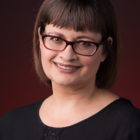 Mia Malan is the founding editor and director of the Bhekisisa Mail & Guardian Centre for Health Journalism. Malan was a Knight International health journalism fellow and the senior health journalism resident adviser of the media development organization Internews Network in Washington, DC.
Mia Malan is the founding editor and director of the Bhekisisa Mail & Guardian Centre for Health Journalism. Malan was a Knight International health journalism fellow and the senior health journalism resident adviser of the media development organization Internews Network in Washington, DC.





